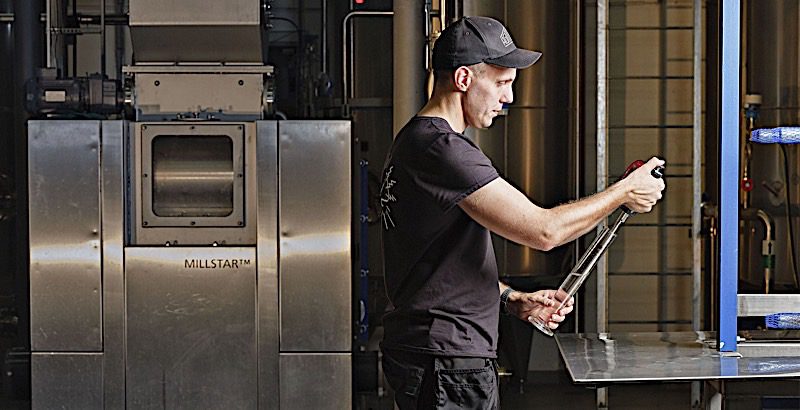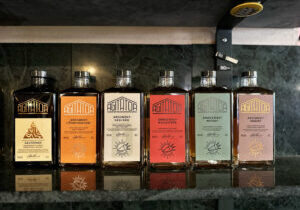
MACHINES MAKE BETTER WHISKY...
BUT NOT ON THEIR OWN
There is a romantic image of the workings of a whisky distillery. It's based on the production being controlled by experienced older men who, with serious faces and coarse wool sweaters, go around opening valves and turning on pumps at exactly the right moment. They can do this because, over time, they have acquired an amazing intuitive sense of what is the "right moment". A sense that only long experience can provide.
Actually, that picture isn't too far from the truth about how whisky has been made historically, and in many distilleries, that's still pretty much how it's done. And nothing could ever replace that fingertip feeling. Or could it?
One of the advantages of building a brand new distillery is that you don't have to pay much attention to how things used to work. The work in a distillery is repetitive and every day the same steps are performed over and over again. That's why we decided to build a highly automated plant. This allows us, with the help of technology, to ensure that the steps to be repeated are carried out in exactly the same way, time after time.
During operation, the distiller gives various parameters to the computer. These become instructions for the automation to manage the process. And what distinguishes a computer-controlled automation is that it can do the same thing in the same way, time after time after time, without distraction and without having bad days. It may sound less romantic, but it gives us both better control and greater accuracy in manufacturing. And most importantly, it frees up time, for those of us in the distillery, to do the things that the machines are less good at or can't do at all.
Simply put, automation does the heavy lifting of opening and closing valves, regulating pumps and controlling pressure and temperature. This leaves room for the distiller to work more sensorial, adjusting parameters that directly affect the product.
Here are some of the things we let the machines help us with, following instructions given by the distiller:
The grinding
- The speed of feeding malt into the mill
- Pre-soaking water temperature and flow rate
- Temperature of rinsing water at the mill rolls
- The speed of the pumping of the finished mash mixture
The mashing
- Continuous measurement of the density of the mash bed
- Height and speed of the mash tun mixer - based on the value of the mash bed
- Pumping speed for emptying the wort
The distillation
- Pressure in the boilers
- Power to the boilers
- The temperature of the cooling water
In addition, the alcoholic strength of the alcohol coming out of the boilers, the temperature of the gas in the boilers and the temperature of all liquids are continuously measured. We want to leave as little as possible to chance.
We usually say that computers do 80% of the work. The remaining 20% involves the sensory side, and that's what we in manufacturing can focus on - 100%. It feels modern and it makes a difference. But that doesn't mean the machines can make whisky on their own. And the distiller's experience is still crucial to the quality of the whisky.









